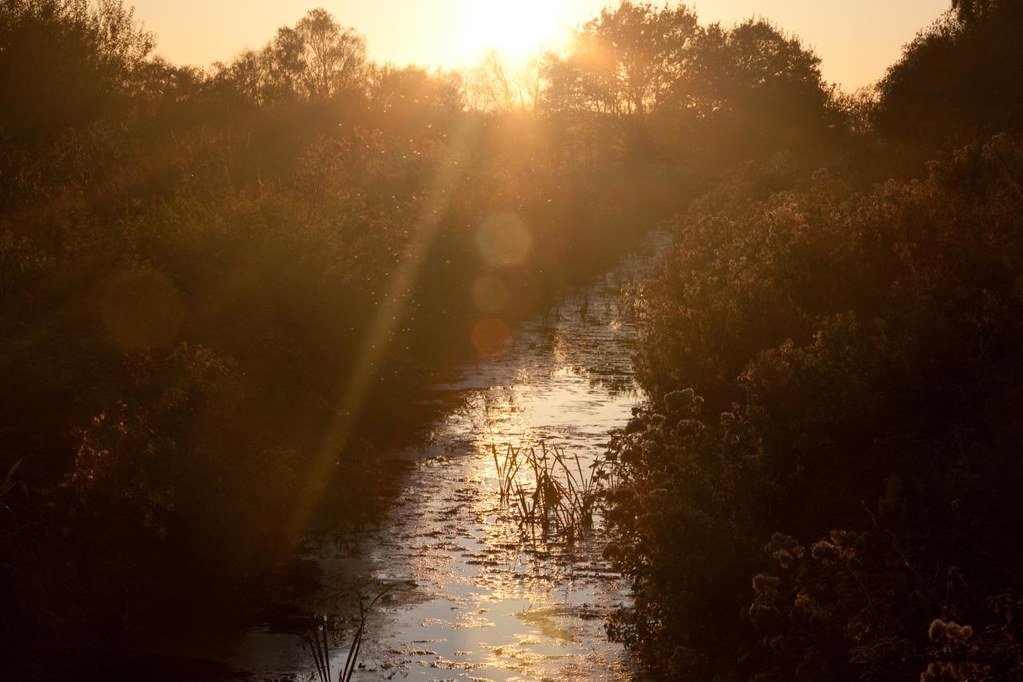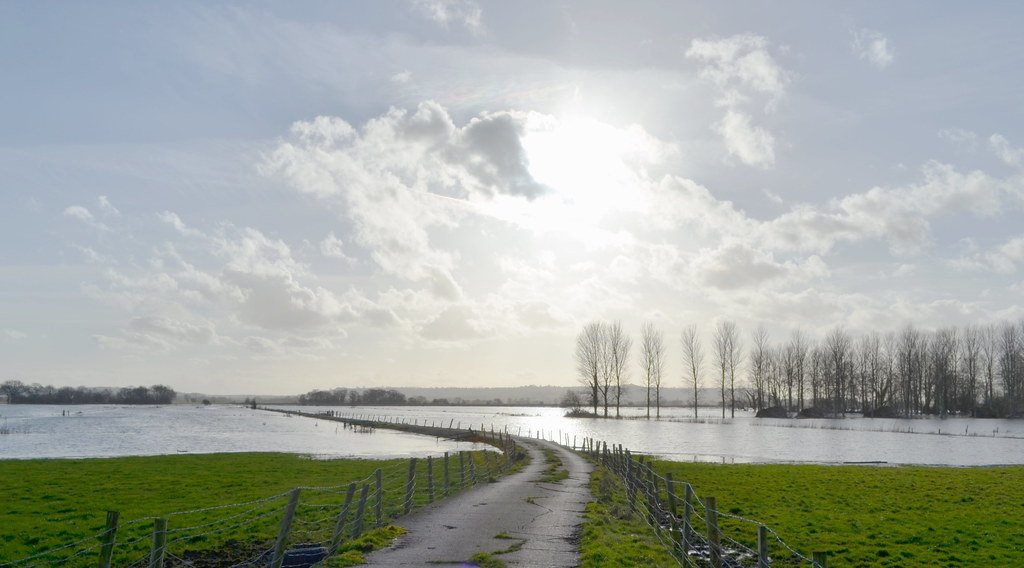
Tony Whitehead looks at the recent downgrading of one of the West Country’s most iconic landscapes due to phosphate pollution in rivers, and at the implications for the Government’s rhetoric on nature protection …
The overall condition across all Somerset Levels and Moors SSSIs is ‘Unfavourable Declining’ due to evidence of failing water quality, most notably high Phosphate levels.
Natural England briefing note, May 2021
The first problem
As any farmer will tell you, alongside sun and water, plants need three things: nitrogen, phosphorus and potassium (‘NPK’ ‒ the K being the chemical symbol for potassium). The nitrogen helps produce leafy growth and strong stems. The phosphorus produces good roots and helps seed germination. The potassium, or potash, promotes flower and fruit production.
Healthy soils will contain these elements in the right quantities and combinations. However, if the land is worked regularly for producing crops, whether that be grass for livestock or veg for us, the soil will lose these elements. So the farmer needs to put them back.
Prior to the last century this was done through returning animal manures to the soils, alongside careful rotation of crops with land left fallow to regenerate, and crops such as legumes planted to help put back nitrogen.
However, at the heart of the so-called ‘green revolution’ of the 20th Century, newly invented chemical fertilizers freed farmers from the need to carefully tend the soils, simply because they could now add nitrogen, phosphorus and potassium at will, and grow grass and crops more abundantly on the same land year on year. The soil more or less became an inert medium that held roots, rather than the living basis of farming.
There was now no longer a need for farms to grow both crops and rear livestock ‒ known as mixed farms ‒ in order to feed the soils in the appropriate rotations. They could now specialise; and in parts of the West Country this led to a huge emphasis on dairy production, with the higher-than-average rainfall and warmer climate, alongside the new chemical inputs, being ideal for growing huge amounts of grass. And the quantities of grass could now support newer breeds of cow that produced more milk.
Within a few decades, the whole dairy system changed. High-yield dairy cows fed voraciously on massive quantities of sugar-rich grass, cut regularly throughout the growing season and ‘pickled’ to produce silage. Huge black plastic bales became a familiar sight in the countryside. Also, high-energy fodder crops, particularly maize, were grown to supplement the grass feeds. These also demanded huge inputs. And, as a side business, the maize also started to feed anaerobic digesters to produce biogas.
The intensive dairy system in places such as Somerset became thoroughly addicted to chemicals.
And here’s the first problem. Simply put, those chemical fertilizers do not stay on the fields. Instead, they percolate through the soils and into the streams and rivers, where they concentrate, especially downstream. Agricultural pollution is now the greatest threat to our water environment, with 40 per cent of waterbodies impacted.
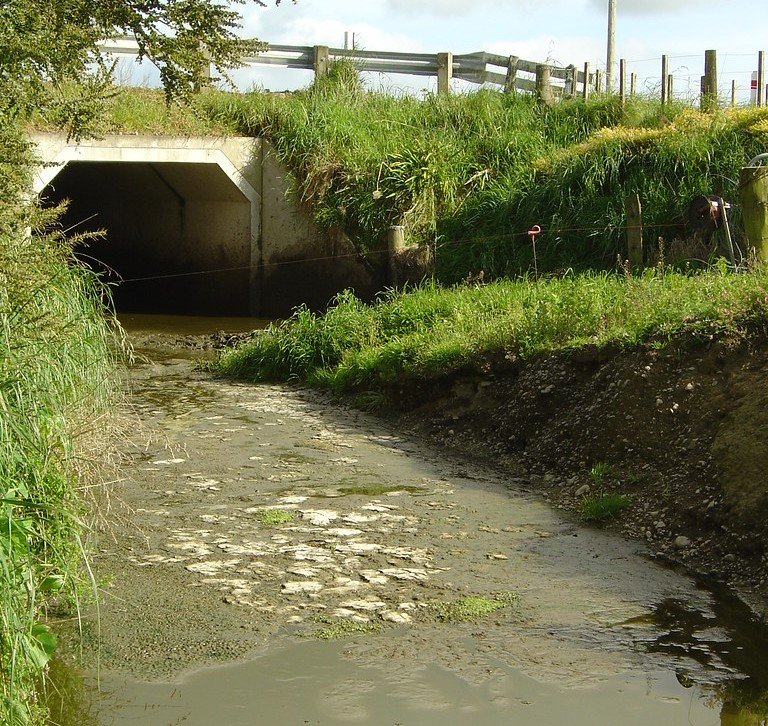
And what do fertilizers do? Basically, excessive nutrients promote excessive plant growth. Which in rivers has disastrous effects. A recent briefing note from Natural England (NE) about phosphorus in water courses on the Somerset Levels describes the situation perfectly:
Excessive nutrients lead to the overgrowth of duckweed and algae on the water’s surface, and the vigorous growth of dominant plant species on the ditch margins. The increase in duckweed and algae smothers other plant species, and creates heavy shading of the water column, depriving submerged plant species of light. This causes a decrease in plant diversity and a declining quality of habitat for animals such as invertebrates. Shading from heavy duckweed growth prevents submerged plants from photosynthesising, lowering the level of dissolved oxygen in the water, which in severe cases can kill animals requiring oxygen rich conditions such as fish. The accumulation of dying algal and plant matter on the ditch bed further contributes to deoxygenation.
The precious river and ditch systems on the Somerset Levels are literally dying as they are starved of oxygen. And if the watercourses die, this affects everything else.
And the level of phosphates, one of those three essential nutrients, on the Somerset Levels has been recorded as particularly high.
But intensive dairy farming is not the only source of nutrient enrichment …
The second problem
What goes in must come out. On farms, animal slurry spread on fields is one of the sources of the nutrient run-off. But, not to put too fine a point on it, humans also produce nutrient-rich slurry!
So if you put a new housing development within the catchment of a wetland such as the Somerset Levels and Moors, human waste is also going to add to nutrients in the water. And this is becoming an increasing problem for water companies, planners and developers.
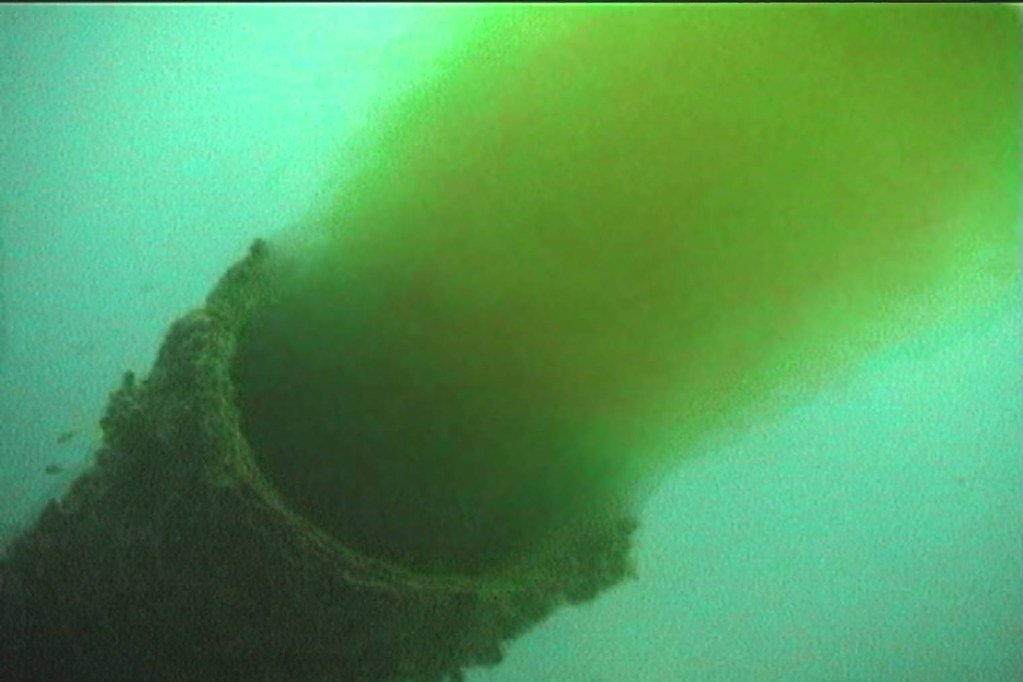
Currently, sewage discharges account for a significant proportion of nutrients such as phosphates entering our rivers. Although it is costly, the water companies are attempting to manage the problem, and should be able to reduce it to a degree. But the pressure for new building means that as fast as they deal with it, new sources are potentially appearing.
And this combination of pressure from both agriculture and housing is reaching a crisis point for nature on the Somerset Levels and Moors.
Unfavourable Declining
The Somerset Levels and Moors have long been known for their wildlife value. For this reason, many parts of the area are designated as Sites of Special Scientific Interest (SSSI). This gives them statutory protection under the Wildlife and Countryside Act, and in law means they need to be kept in good condition, and landowners must have special regard for any they manage. Collectively, the different SSSIs make up the Special Protection Area (SPA), another statutory designation derived from the EU Habitats Directives, but part of domestic legislation as the Habitats Regulations.
Their condition is monitored by Natural England, the government’s scientific advisor on nature. They carry out regular checks on a number of different aspects of site condition, and rate them appropriately.
The highest marks are for those in favourable state. All SSSI’s should be aspiring to this condition. As their condition deteriorates, they slip into the unfavourable category. ‘Unfavourable-recovering’ means that a problem has been identified and steps are being taken to make things better.
The worst category is unfavourable-declining. This means that a problem has been identified and is likely to get worse if no solution is offered. It’s the very worst category before ‘destroyed’!
In late May this year, on reviewing the data on phosphate enrichment on the Levels and Moors, Natural England designated all the area’s SSSIs as ‘unfavourable declining’. A bold move that must serve as a wake-up call to all involved in the management of this potentially amazing place.
This must be viewed in light of the fact that 13 per cent of freshwater and wetland species are threatened with extinction: this is a climate and nature crisis, and the recent downgrading of the Levels’ status is another example of this.
Rhetoric vs Reality: tackling the difficult stuff in real places
With its headline-grabbing aspirations to restore 30 per cent of UK land for nature by 2030, the government is talking a good game. But how is it going to do this? Here it starts to get difficult. And indeed contradictory.
One of the most significant means by which nature has been protected is through legal protection of invaluable places. First through the designation of SSSIs, and then, most crucially, through the Habitat Regulations. These are hugely important.
Indeed, in the current crisis on the Somerset Levels and Moors, the Habitats Regulations are being used effectively to require new housing developments to reduce their nutrient outputs. In June 2021 planning permission for 148 houses in Wells was refused permission because the developer did not produce, in the inspector’s view, a reasonable plan for dealing with excess nutrient load because of its potential effect on the highly protected Levels and Moors.
This is only possible because of the Habitat Regulations. They provide a strong legal basis for protecting our best sites, those such as the Levels and Moors which you would expect to be ‘in’ the 30 per cent for nature.
Which is why it was a surprise to many that the same government that is expressing this ambition to protect sites, in May 2021 opened up for ‘review’ the Habitats Regulations ‒ the single most important piece of legislation that legally requires any developer to consider our wildlife sites in their proposals.
These regulations have been reviewed repeatedly and in detail in the last decade, and not once has the law been found wanting. Indeed, the only criticism has been that their application has not been thorough enough!
So if the current review, to be led by Lord Benyon later this year, is all about making them even better, then all well and good. However, we need to be alert to any moves to weaken their powers, or to build in loopholes that allow for a lowering of standards.
Standards are also the key issue when it comes to the other significant source of nutrient pollution on the Levels and Moors: agriculture.
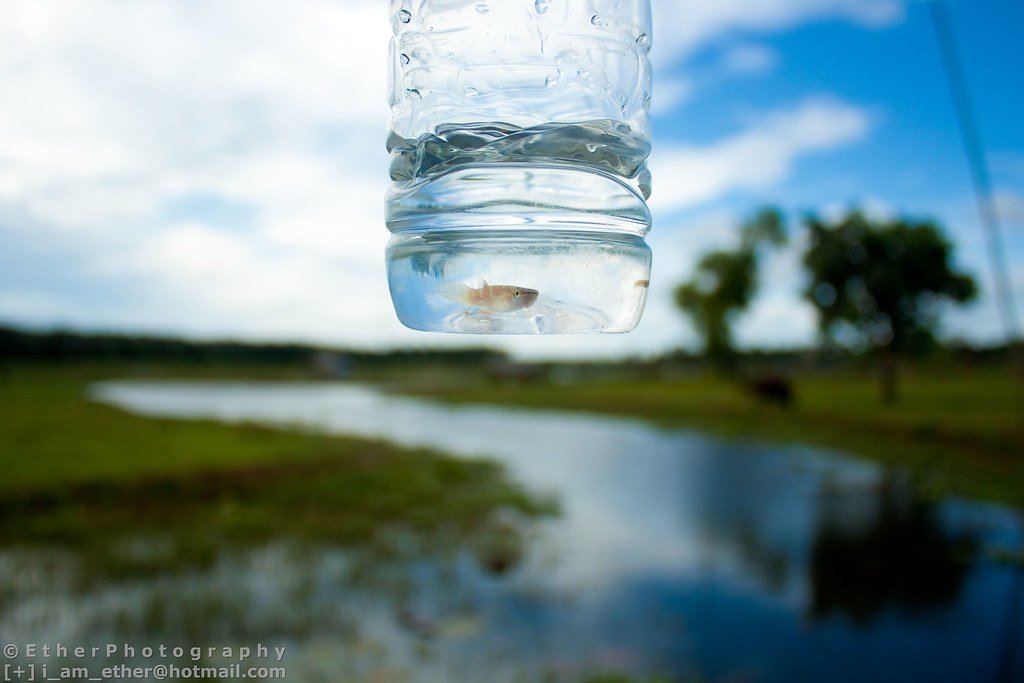
River law
The Levels and Moors protected area is not an ‘island’. It is a low-lying engineered floodplain, with some areas at or even below sea level. It is the end-point for water as it flows off the surrounding catchment, before it reaches the sea. It is therefore at the mercy of what goes on upstream. And what goes on upstream is largely intensive agriculture, mainly dairy, but also some arable and lately, biomass production in the form of maize. So how are the Levels protected from pollution, including nutrient enrichment, from surrounding farmland?
First, alongside an overall statutory duty to ensure protected sites are in good condition, the government has a legal responsibility to ensure our rivers and streams are also in good condition. This is a requirement of the Water Framework Directive, introduced in 2000 by the EU in order to improve water quality across the continent. Like the ‘Habs Regs’ these became UK law in the Water Environment Regulations. But in making sure the UK keeps its legal commitments (and we’ll return to this later) a large burden of responsibility lies with farmers.
Like all businesses, farms are required by law not to directly pollute watercourses. The Environment Agency (EA) can, and does, take farm businesses to court for breaches of the law. However, this is now relatively rare because of successive cuts to the Agency under the past ten years of Conservative austerity. Farms currently have a one-in-263-year chance of receiving a visit from the Environment Agency, according to the Salmon and Trout Conservation Trust’s analysis of official data.

It also only applies to the most audacious pollution incidents, where raw sewage, for instance, is deliberately pumped into a river.
The more subtle percolation of nutrients off land into rivers is controlled in other ways. For decades all farmers have been in receipt of subsidy under the behemoth that is the European Common Agricultural Policy. In return for this payment, farm businesses agree to certain conditions. Known as Good Agricultural and Environmental Conditions (GEAC), these are the basic standards we require of farmers in return for our support. Two of these relate directly to water quality ‒ and GEAC 1 is specifically aimed at reducing nutrient run-off into water courses and asks for ‘buffer strips’ or uncultivated land to be left within 10m of streams and rivers.
Secondly, recognising some areas contribute more to nutrient run-off than others, there are also “Nitrate Vulnerable Zones”. These NVZs include about 55 per cent of land in England, including quite a lot of land on and surrounding the Levels and Moors. Here farmers are required to satisfy higher standards.
Combined, these approaches are what might be called ‘the sticks’: if a farmer breaches the law or these conditions (so called ‘cross-compliance’ breaches), then they can be fined or have their support cut. However, as is known, this very rarely happens.
Then there are ‘the carrots’. Farms can voluntarily enter into various agri-environment agreements. In return for more taxpayer support, farms in agreements are required to farm their land in an environmentally sympathetic manner. In some areas this can include giving special attention to rivers, working on a form of ‘riverine rewilding’ when the water is slowed through deliberate blocking and reprofiling of streams. When done well this can be effective in stopping nutrients ending up en masse downstream.
Getting serious about nature

So, given the comprehensive statutory framework, the protection of our best nature sites, the legal duties of the government, farmers and developers, and the cash and encouragement available to help people do the right thing, it is very difficult to understand the appalling state of our streams, rivers and wetlands.
It is nothing short of a huge failing and a national disgrace.
And NE’s recent decision to designate all the Somerset Levels and Moors SSSIs as being in “unfavourable declining” condition epitomises that failure. What should be the very best has become the very worst.
If the current government (or indeed any government) is serious about ‘leaving the environment in a better state’ and so on, then it seriously needs to get back to some basics. The shiny new things are great: the constant talk of new woodlands and new creatures being reintroduced, even of new ‘protected’ landscapes. But these are nothing but icing on a rotting cake.
If the government is serious, it needs in its forthcoming review of the habitats regulations to make them even more fit for purpose, and not to attempt – as some fear – to weaken them by building in loopholes for anyone wanting to make a fast buck through exploiting the land.
If the government is serious, it needs to make sure its post-Brexit agriculture policy supports the ambitions of many in the farming community to do more for nature. It needs to produce a world-beating agricultural policy that puts nature and public good at the heart of public support for farmers. And to properly fund this. At the moment, in the form of the ‘Sustainable Farm Incentive”, it looks more like a potential lowering of ambition and standards. We have to get this right.
If the government is serious, it needs to properly fund its agencies, EA and NE, to do their jobs. To act against those breaking the law. To make sure our best sites are in the best condition. To provide the very best research and advice.
If the government is serious, it needs to provide the best possible legislative protections and encouragements in the forthcoming Environment Bill. Legally binding targets for nature that actually mean something. And a strong and properly independent office for standards.
If the government does not do this, there is no way it is going to turn its rhetoric on nature into reality. Thirty percent of land for nature by 2030 will remain nothing but empty words.
The best measure, the best question to ask, is a simple one. When you hear the latest government pronouncements on nature, ask “will this improve nature where I live?”. If you live on the Somerset Levels and Moors, ask simply “will what I am hearing improve water quality here?”. Because unless national policy makes a real difference where you are, it is largely useless. We are in a nature and climate emergency. We need the government to show leadership and ambition that delivers action because they fully understand what this means.
Rebecca Pow retweets Defra’s latest water quality promises, but what about the Somerset Levels?
Editor: There’s a saying “words are cheap” which appears to apply to almost every promise by this government. Today, Rebecca Pow, Conservative MP for Taunton Deane and environment minister, retweeted the latest Defra promise on water quality. This came in a week of bad news on the water quality front, with the UK bottom of […]
